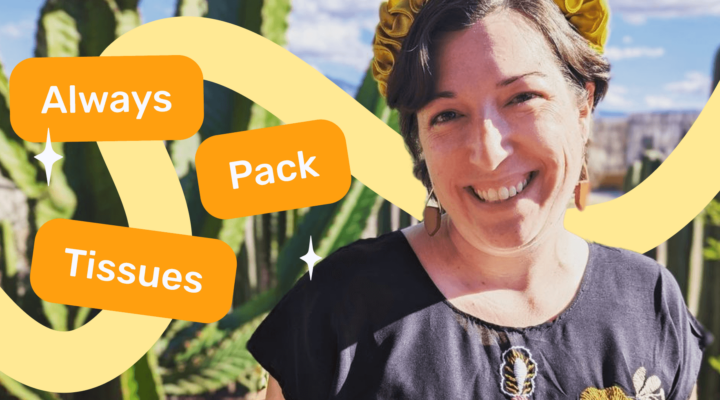Facebook Advertising 2020
2020 has seen unprecedented changes in different niches and companies. Facebook marketing is no exception. To monitor current events, people are increasingly using social media instead of sources such as CNN or Fox. Thus, Facebook has seen a 70% increase in the time spent across its platforms since the beginning of pandemic, making it especially attractive for marketing.
Ad Boycott: Reduction in Demand for Advertising
An even bigger change in Facebook advertising occurred in July 2020, following the infamous ad boycott. A number of massive advertisers, such as Verizon, Ford, and Pfizer, pulled their marketing budget out of Facebook, which caused the platform to experience a reduced demand for advertising and, as a result, lower ad costs. Jason finds [4:48] that this couldn’t be a better time for small businesses to get involved, as they now had an opportunity to get more ads at a much cheaper cost.
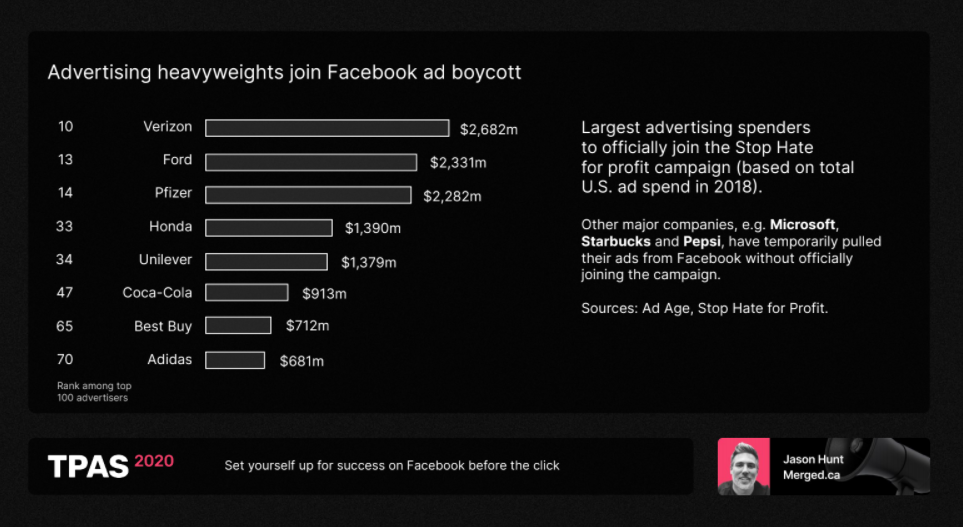
Traffic Changes Across Different Niches
Many niches experienced traffic changes due to COVID-19. While some industries, such as finance, food, healthcare, media, and pharma, saw their audiences grow, most niches experienced a significant decline in traffic with travel being hit the hardest. So, to avoid going down with the travel niche, those who still want to earn on travel marketing should be thinking of new ways to run their businesses and looking for new opportunities that have emerged in this changed environment.
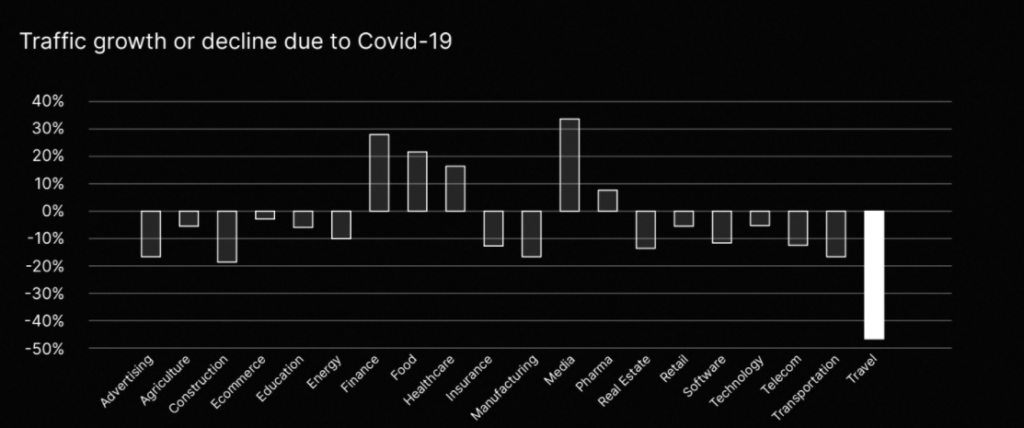
Why Use Facebook Ads
Today, Facebook accounts for over 83% of social ad spending, which makes it the most powerful platform out there for leveraging social media to reach new audiences. Facebook’s algorithm has unparalleled abilities and can produce marketers with incredibly fast results. For example, Facebook allows you to find your top customers, as advertisers can specify desirable parameters and create custom audiences. Facebook is all about enhancing the user experience and implements regular changes to ensure users come back. While some marketers find the algorithm inconvenient, Jason explains [9:54] that you can train the algorithm to show a more desirable feed and customize advertising on Facebook to your advantage.
10 Steps for Successful Facebook Advertising
Facebook, like any other platform, has its own unique features. So, to develop an efficient Facebook ads strategy, it’s crucial to understand the ropes.
1. Research Your Avatars
First and foremost, to set up Facebook ads targeting, you need to understand who your audience is and create ads that will relate to them.
One way to do this is to spy on your competitors. What Jason personally recommends is writing down a list of competing businesses and checking their page transparency on Facebook. You can find this information on the left-hand side of the desktop version of Facebook. There, you’ll see every single ad that the advertiser is running. If a campaign has been up for a while, it is most likely efficient, which can provide you with good insights for how to run Facebook ads.
You also need to understand your clients’ struggles. Visit review sites where users share their experiences and check the one-star reviews. These are real problems that people are facing, which can become a basis for your Facebook ads strategy now that you know which concerns to address in order to get attention. Another place to find out about your audience is groups and forums on the platform. Facebook encourages communities to be active, so you can look through relevant groups to gain some insights.
Finally, always follow the platform’s policy. You don’t want to get your account shut down and lose potential clients, so be sure to know the rules. For instance, if you’re using multiple accounts, try to consolidate them into one, as Facebook wants everyone to have a single page. Or, if you’re starting to advertise on the platform, ensure that your approach complies with the policy (no banned words, etc.).
2. Build Your Audience
Creating custom audiences is the next important step. Prepare a customer list based on your website visitors and try to arrange it from the best to worst clients. Take your top 100 best customers and create a lookalike audience. Facebook will then try to find people similar to your best clients.
Videos can also be used to capture visitors. For example, create an audience of people who watch your videos for a certain time (Jason targets [18:08] users who watch at least 50% of his videos). Such viewers are likely to be unfamiliar with your brand, so these videos warm them up, which makes the subsequent Facebook retargeting ads seem less aggressive.
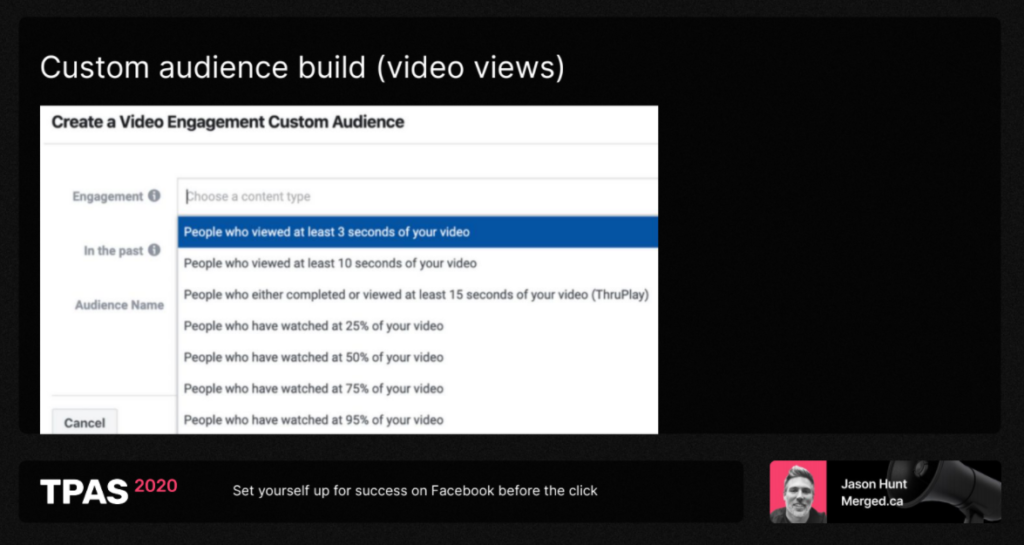
Finally, consider segmenting your Facebook audience by visit duration. You want to find people that are consuming content on your site and don’t click off right away. To that end, take the top 25% of people who spend time on your site and create a lookalike list of consumers.
3. Copy That Converts
How can you create copy that drives conversions?
- Facebook has recently reduced the copy from five or six lines down to three. Make sure you use this space to your advantage and get the most information you can in that copy.
- Outline the pain points of your customers. Think about why people want to buy your product and come up with a sentence that gives an immediate sense of resolution to their problem. Tie this hook to the first three lines of your Facebook ad.
- Write four to five headlines and test them to find the highest-converting one. Should you add emojis? That mostly depends on the target audience. You can use emojis instead of check marks or bullet points. However, simplicity is often the ultimate sophistication, so try to keep your ad simple to consume so that people will click the “Learn more” button.
4. Creative That Converts
How to make your creatives more efficient?
- Make your creative elements relatable to the avatar. The closer you marry that image to the target customer, the higher the conversion. For instance, if you’re advertising a skin care product and want to target females between the ages of 50 to 60, using a male model won’t work.
- Test the conversion of image versus video. Jason gives an example [23:30] by explaining that his marketing agency found that images perform better than videos. People want a quick resolution to their problem and images can do that better than videos. However, it all depends on your audience, so make sure to test your options.
- Use different creatives for each placement. For example, select four to five different ads to cover each placement. You could use a vertical video or swipe-up image on Instagram, a square image on your Instagram feed, or a carousel with a mix of all the other ads that you’re running.
5. Set Your Bid Cap
Now, we’re going to the next level. Set a bid cap to show Facebook how much you’re ready to spend on each lead. For instance, you can tell the platform to spend no more than $10 to get you a lead.

6. Slowly Increase Your Bid
The next step is to adjust your bid cap for a couple of days to find the best performing number. Facebook resets its auction every 15 or 30 minutes, so you can start by slowly increasing your bid (say, by $5 every half an hour) and see whether you’re getting any additional traffic. If not, your bids are too low, so Facebook can’t serve ads to your target audience. In such a case, continue increasing your bid to $15 and refresh half an hour later. Keep this up until traffic starts to come in.
You can set bid caps for various audiences. For instance, Jason targets groups such as: the top 1% of people that resemble his top website visitors, miscellaneous biz page admins, and other similar audiences. Creating and testing different audiences will help you find the customers that convert best.
7. Keep an Eye on Impressions
You must watch the impressions to set up good terms for your campaign. As your bid cap goes up, you’ll start to see some traffic. Jason explains [28:43] how to find a balance.
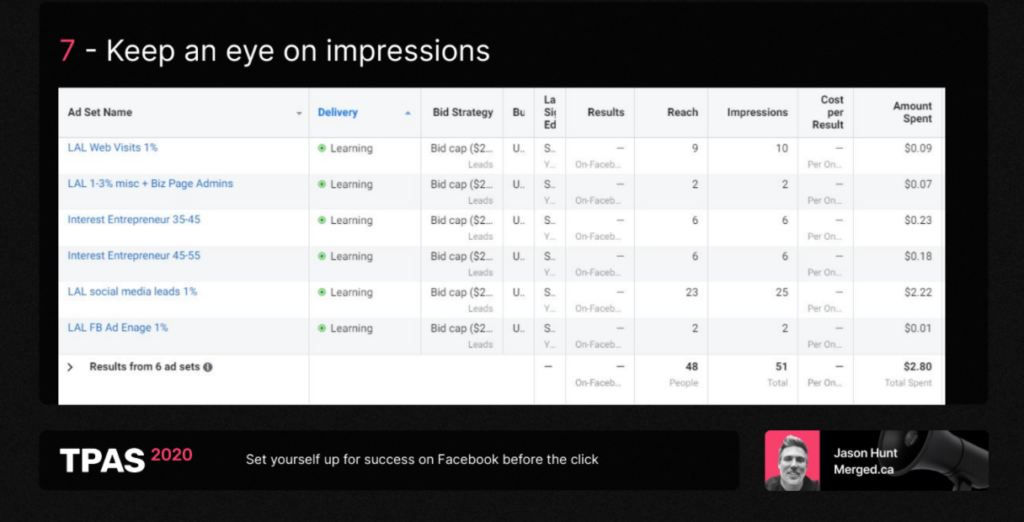
8. Set Your Rules
Facebook allows you to put a ceiling on lead generation expenses. For instance, you may decide that, if spending exceeds, say, $75 without getting any leads, Facebook should shut down the ad. Set this cost per result depending on how much a lead or purchase cost matters to you.
Also, you can set lifetime impressions, which signifies the number of people who’ll see your ad. This parameter helps increase your campaign reliability. For example, you can set a $85 ceiling on expenses and choose 8,000 impressions, so Facebook will shut down the campaign when it reaches the desired number of impressions.
9. Run It on All Placements
Make sure to work on all ad placements, including Instagram swipe up, vertical, and carousel ads. Try different types of copy as well. The more assets you give to Facebook, the better. Such a comprehensive approach can give you insights into what types of creative elements work best with your audience and how to use Facebook retargeting ads.
10. Follow Up
Follow up with your leads in a timely fashion. Leads are like soup, and nobody likes cold soup. It’s very important to adjust the knobs and get the most value out of your campaign. For instance, if you work Monday to Friday, getting leads on Saturday morning will be useless, as when you get to work on Monday, your leads might not even remember clicking the ad two days ago. To avoid wasting the marketing budget, run ads at a very minimum spend on weekends and increase the bid cap on Monday morning.
Be sure to configure notifications and get a hold of new leads. Tools like Zapier help send the lead information from Facebook to, say, Slack so that you won’t miss them. Here [32:46], Jason explains how to set up such notifications.
In addition, note that Facebook automatically fills out forms, so users simply see the ad and option to opt in, whereas, if you send them to a landing page and require them to manually type in their data, the number of leads will be lower and, therefore, the cost per lead will be higher.
Despite the current challenges that travel and other niches are facing, advertising on Facebook is now even more beneficial than ever for smaller businesses. To set a successful campaign, it’s important to target your best customers, prepare and test different creatives, adjust your bid cap to attract traffic at a good price, and always respond in time. While many people still complain that Facebook ads don’t yield results, it’s important to focus on the follow-up process, otherwise, none of Facebook’s advanced features will matter. By using these tips, creating a “set and forget” Facebook campaign will be a piece of cake.
For more advice and helpful hints on how to set up Facebook ads, make sure to check the full version of Jason’s webinar on YouTube.
Presentation
You can download the presentation from the webinar at this link.


